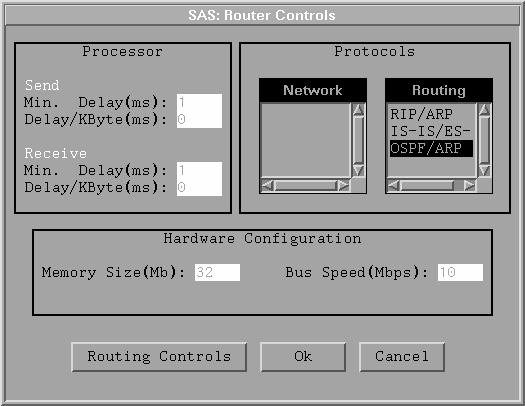Chapter Contents
Previous
Next
|
Chapter Contents |
Previous |
Next |
| LAN Environment |
The term router is also referred to as an intermediate system, gateway, or packet switch. These devices use the network layer information to route packets from a source to a destination on a different LAN. To route packets through the network accurately and efficiently, each router must have some knowledge about the entire network topology. Usually this information can be limited to knowing the network addresses and router IDs of the routers on the network. A variety of routing protocols have been developed to coordinate the exchange of the router information and for determining the "best" paths through a network. The netWorks application currently supports two routing protocols.
The architecture of a Router model is shown in Figure 4.13, and sample Router model controls are presented in Figure 4.14.


|
Chapter Contents |
Previous |
Next |
Top |
Copyright © 1999 by SAS Institute Inc., Cary, NC, USA. All rights reserved.